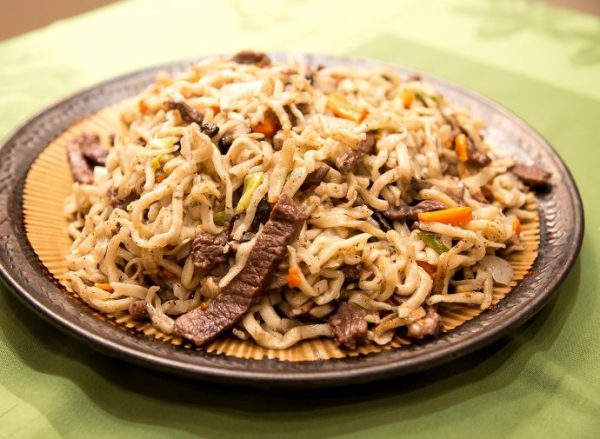The words ‘Mongolian food’ are often synonymized with the ornate Mongolian Barbecue. But here’s a fun fact, the Mongolian barbecue is not even Mongolian, it originated in Taiwan. So what is Mongolian cuisine really? Some of the most prominent elements of the Asian country’s cuisine are meat and dairy, essentially because of its cold and dry weather conditions. For the same reason, Mongolian food is also traditionally a little low on spices and vegetable.
Given its close proximity with China and Russia, Mongolia’s food also draws plenty inspiration from the two countries and that explains why the ‘buuz’ (a steamed meat-filled dumpling) is one of the most popular dishes in the country. One more popular Mongolian dish is the tsuivan, which is a traditional noodle stew with meat and local greens. The preparation is mild and scores high on the nutrition scale due to the presence of meats and fresh vegetables. Although the recipe tastes best with fresh homemade noodles, you can use store bought noodles as well. So, try something new tonight with this easy tsuivan recipe.
Image Source
Feature Image Source
A mild noodle stew with fresh vegetables and meat.
Votes: 0
Rating: 0
You:
Rate this recipe!
|
|
Votes: 0
Rating: 0
You:
Rate this recipe!
|
Instructions
For the Noodles
Mix flour and water to get a pliable dough. Let it rest for 15 min.
Separate the dough into two pieces and roll into round sheets. Pour some oil into the center of one sheet. Disperse it over the surface by temporarily folding the sheet together from different directions. Place the second sheet on top of the first one, and disperse oil on it in the same way.
Cut the two sheets in half, and place one half on top of the other with the oiled surface looking up again. Cut the now four sheets in half, and place one of the quarters on top of the other in the same way.
Now, cut in half in the same direction twice, until you get a stack of a size of about 7x25 cm (~ 3x10 in), about 5 cm (~2") tall. From this stack, cut the noodles about 0.4 cm (~0.2") wide.
Cooking the Meat & Vegetables
Cut the vegetables into narrow stripes and the meat into small pieces.
Take a large pot and sauté half of the onion rings slightly on oil. Add the carrot stripes and sauté them for a few minutes as well (also any other types of vegetables that require long cooking). Add the meat and sauté as well. Now add some water as required so that nothing sticks.
Season well with garlic, salt, and pepper.
Add the cabbage, and let it cook under a closed lid for a few minutes to reduce the volume. Add water, until it reaches about 2/3 of the vegetables. Let everything simmer for a few minutes.
Add the remaining onion rings.
Putting the Stew Together
Place the noodle stripes carefully on top of the vegetables, so that they keep sticking together in stacks. Close the lid. (The lid must remain closed until the end, because the noodles cook by the steam from the boiling water below.)
Keep the water boiling for about 15 min. First on medium heat for the steam to replace the remaining air in the pot, then on small heat. At the end the water in the pot should be almost completely gone.
Open the lid. The noodle stripes should have taken a slightly reddish-brown color, and are somewhat sticky at the outside. Take a small cutting board (or something similar) to fan fresh air into the pot - the noodles turn dry at the surface, lose their stickiness, and change their color some more. Use a fork or some chopsticks to separate the noodles from each other. They should not stick to each other anymore (sticky noodles means that either there wasn't enough oil in between, or they haven't finished cooking yet).
Shuffle everything to mix the ingredients and add some spring onion rings.
Serve on a plate, garnished with some parsley, and seasoned with ketchup or any other condiment.






















